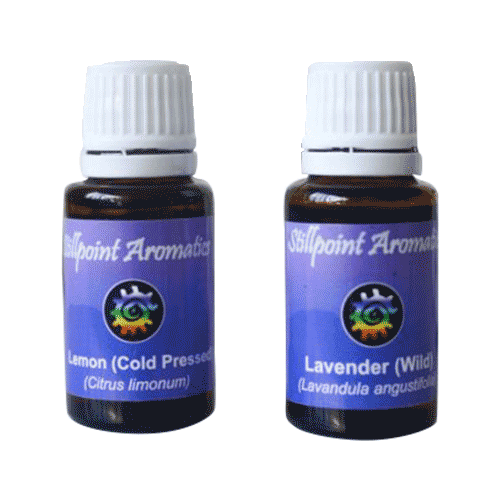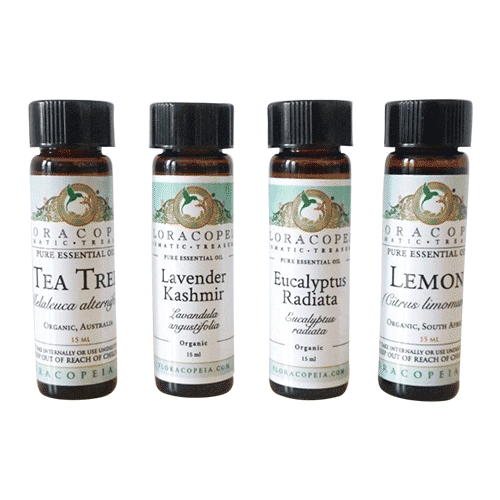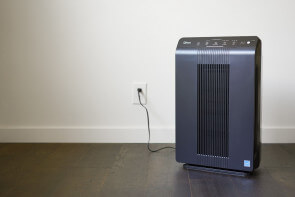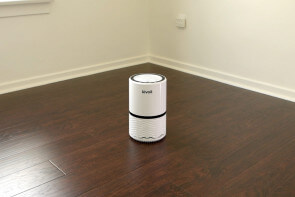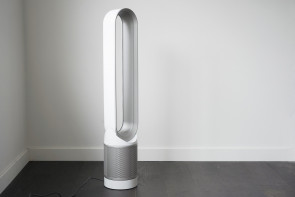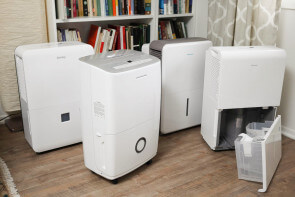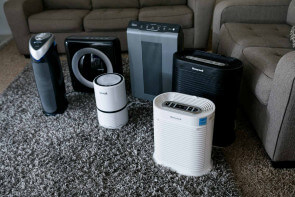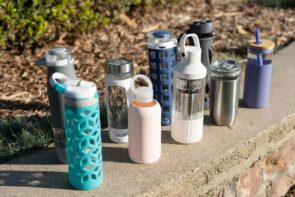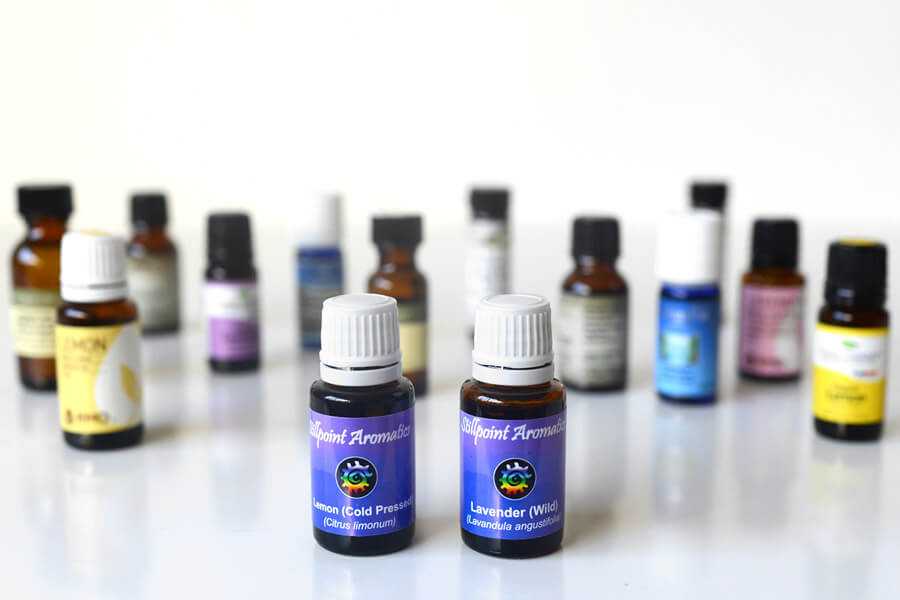
The 7 Best Essential Oils
Our main professional source of information for this article is a writer, a researcher, and holistic health practitioner studying nutrition, human anatomy, physiology, spirituality, as well as aromatherapy. After over a month of research and evaluation, we determined Stillpoint Aromatics offers the best essential oils. They source the finest plants and make the greatest effort to preserve the oils’ pristine quality by keeping them in cold storage, capped with nitrogen. Running a close second — and for half the price — Floracopeia’s essential oils smelled very fresh and quite similar to Stillpoint’s, but lacked the energetic quality from our top pick.
Our main professional source of information for this article is a writer, a researcher, and holistic health practitioner studying nutrition, human anatomy, physiology, spirituality, as well as aromatherapy. After over a month of research and evaluation, we determined Stillpoint Aromatics offers the best essential oils. They source the finest plants and make the greatest effort to preserve the oils’ pristine quality by keeping them in cold storage, capped with nitrogen. Running a close second — and for half the price — Floracopeia’s essential oils smelled very fresh and quite similar to Stillpoint’s, but lacked the energetic quality from our top pick.
Table of contents
- How we found the best essential oils
- Compare the best essential oil brands
- Essential oils vs. absolutes vs. hydrosols
- Benefits of essential oils & aromatherapy
- Safety when using essential oils
- Uses for essential oils
- What to look for when purchasing essential oils
- How we tested
- Best overall: Stillpoint Aromatics
- Runner-up: Floracopeia
- Other brands we considered
How we found the best essential oils
After several weeks of exhaustive research, we sifted the Internet to find as many essential oil brands as possible that were available in America. We searched through web retailers, scoured essential oil and natural health blogs, online forums and reviews, along with searching through Subreddits like /r/essentialoils and /r/aromatherapy.
We then spoke with professionals in the business including a Clinical Registered Aromatherapist, several massage therapists and a Holistic Health Coach. In addition we read through scientific research studies, and numerous essential oil, natural health and aromatherapy books — both historical and modern.
Finally, with a clear understanding of exactly what makes a great essential oil, we combed through our large list of candidates — plus found a few more companies of high integrity — to see if they truly met the demanding criteria for quality.
With this knowledge we selected a total of seven different brands to test in-house:
Compare the best essential oil companies
| Overall Rank / Brand | Lavender $ / mL | Lemon $ / mL | Scent Ranking | GC/MS Testing | Farming |
|---|---|---|---|---|---|
| 1. Stillpoint Aromatics | $3.17 | $1.03 | 1 | Every batch | Wild/Organic |
| 2. Floracopeia | $1.67 | $0.80 | 3 | Yes | Wild/Organic |
| 3. From Nature With Love | $0.95 | $0.43 | 2 | No | Organic & Conventional |
| 4. Mountain Rose Herbs | $0.85 | $0.47 | 4 | Occasionally | Organic/non-GMO |
| 5. Plant Therapy | $1.10 | $1.00 | 5 | Every batch | Organic & Conventional |
| 6. Oshadhi | $3.63 | $1.16 | 6 | Yes | Wild/Organic |
| 7. Rocky Mountain Oils | $1.47 | $0.66 | 7 | Every batch | Conventional |
What are essential oils?
The term, “essential oil” is actually the shortening of a historical term: “quintessential oil,” alluding to the oils as the spirit or life force of the plant. Of course the oils are a physical substance, not supernatural; however, their ethereal aromas and therapeutic talents can have a spiritual, as well as a mental/emotional effect on us.
Essential oils are in fact NOT oils at all, they’ve simply acquired that name because they do not mix with water, just like regular oils. They are a vital liquid present inside living plants — a natural solution of various complex chemical constituents. Scientifically, essential oils are concentrated aromatic volatile plant compounds (‘volatile’ meaning they can change state or evaporate very easily). They are mostly derived from the flowers, leaves, stems and fruits of plants, while some are extracted from the bark and even the sap of trees.
Inside the living plant, essential oils serve several purposes, one of which is defense. Acting like the plant’s immune system, the oils help it fight off fungus or bacterial infection, and protect it from insects and animals. Another purpose is reproduction; the pleasing aromas attract pollinating insects like bees and butterflies. We’re not the only animals who like the smell of flowers.
How are essential oils produced?
The most common processes for extracting the essential oils from the plant material after harvesting are:
- Distillation – steam from boiling water passes through plants drawing out the oils, then the oils are separated from the cooled, re-condensed water
- Expression – (also called cold pressing) heavy pressure squeezes the oils from the materials; used mainly with citrus fruit peels
Maceration/Distillation – the plant material is softened in warm water to release the oils - The amount of essential oil present within the plant material is scarce, more so for some plants than others. It can take up to 60 roses to produce one single drop of rose essential oil.
Essential oils vs. absolutes vs. hydrosols
When searching for and purchasing essential oils from reputable companies you might come across the terms “absolute” and “hydrosol” often right next to the essential oils of the same plant. Be aware, these are not the same as essential oils.
An absolute is a fragrant liquid that is extracted from the plants using chemical solvents, like alcohol. Though the solvents are removed after the extraction process, there still remains a tiny amount of the chemical in the final product. Absolutes are much thicker and more concentrated than essential oils, and because of this they are often used in skin care products and lotions.
A hydrosol is simply the aromatic water that is left over from the steam distillation process. Hydrosols are basically just scented H2O and are generally used as perfume, cologne, air or fabric freshener, or they can be added to a soothing bath.
Benefits of essential oils and aromatherapy
Aromatherapy is an ancient practice of natural healing and plant medicine that has been documented in human civilizations around the world for over 6,000 years. The use of prescribing aromatic plant extracts for massage, for bathing and for mental, emotional and spiritual imbalances has proven benefits through both practical and scientific evidence.
The scents and the therapeutic capacities of each essential oil are unique to each plant and can have many physiological and psychological benefits. The oils have the ability to calm and release stress, to uplift depression, to stimulate and awaken the body and mind, to relieve sore muscles, or even loosen a cough if used correctly.
Aromatherapy does not literally take away stress or depression, but rather it balances the disturbances within your body and mind, and fortifies your weaknesses, allowing your body to heal itself.
And since the oils have anti-viral, anti-fungal and antibacterial qualities within the plants, we as humans can also make use of these benefits for our own health. Again, of course, when used properly.
It’s very important to keep in mind that the American Food and Drug Administration (FDA) regulates essential oils mainly as cosmetics, NOT as therapeutic supplements, herbs or medications. So if you come across an essential oil company or salesperson who claims their oils can cure certain diseases or mental illnesses, they are violating federal law and can be prosecuted and fined by the US government.
One very public example of this came in September of 2014 when the FDA cited both dōTERRA and Young Living, multi-level marketing essential oil companies. FDA agents found clear evidence that some of Young Living and dōTERRA reps were making claims that their oils could prevent and cure Ebola and many other illnesses! The situation was quickly remedied.
Such bold claims should raise red flags for wise buyers. Be a smart consumer.
This brings us to some extremely important information for your own health…
Safety when using essential oils

Essential oils can be considered, fundamentally, as medication. Although derived from plants and natural resources they are still used as a treatment for health ailments. The oil’s high concentration makes them very powerful and potentially dangerous substances if used incorrectly. It is imperative that you do thorough research before using any essential oil because if used improperly they can cause serious health issues like allergic reactions, rashes, burns and long-term internal damage. The temptation to self-diagnose and self-prescribe can be a great influence in using essential oils, but without professional diagnosis and supervision, you run a risk of causing yourself harm. With that in mind here are some very important guidelines to follow:
Avoid use of essential oils (unless under medical supervision) if:
- You are pregnant
- You have a skin condition
- You have asthma
- You have severe allergies
- You have epilepsy or are prone to seizures
- You have heart disease
- You have high blood pressure
- You are on a course of treatment with prescribed medication
Rules for safe usage:
- Many essential oils are too powerful to be applied directly to the skin undiluted (also known as “neat”), they must be diluted with a neutral carrier oil, such as jojoba oil, to avoid irritation.
- Never use essential oils on or around the eyes or mucous membranes.
- Several oils, like bergamot and other citrus, can cause allergic sensitivity to the sun and should be used with caution.
- Children and the elderly can be extra sensitive to the effects of essential oils.
- Essential oils are flammable, so keep them away from open flames.
- Never ingest essential oils unless it is under the close supervision and prescription of a clinically-trained medical or aromatherapeutic professional. Some oils can be toxic, and if taken internally may be fatal. If you don’t know the specific chemistry of the oil, do not take it internally.
We here at Your Best Digs take your health and safety very seriously, that’s why we spend so much time and effort researching products for you.
Now that we’ve laid out some ground rules for essential oils, let’s see what you can do with these little gifts from nature.
Uses for essential oils
Of course essential oils smell great, but there’s much more to them than just a pretty scent. There are three main techniques to make use of essential oils: aromatic, topical and internal.
Aromatic
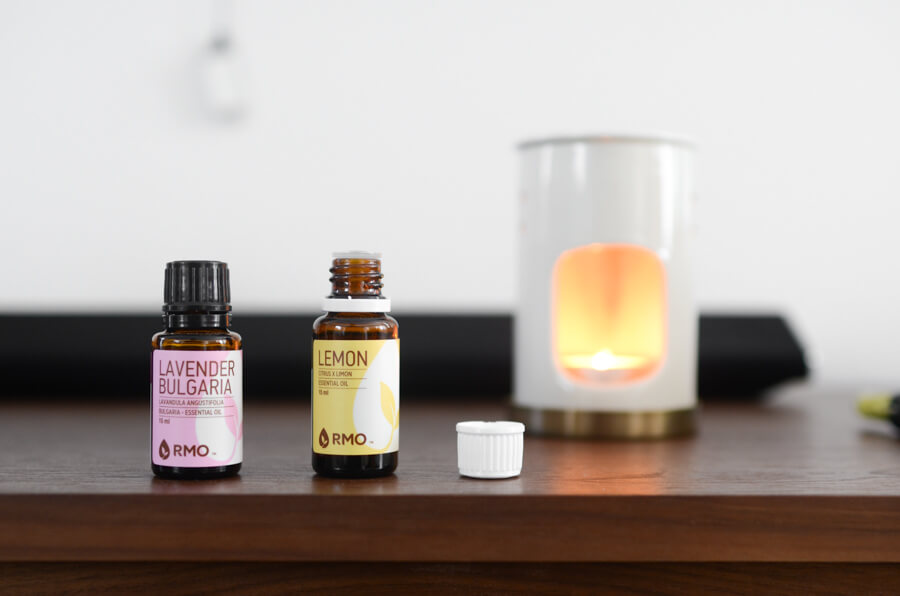
Diffusion: This is the healthiest, safest and most effective method of use. The fragrances from essential oils that are detected through your sense of smell actually have profound effects on your body, mood and behavior. When the oils are diffused into the air the healing properties of the essences enter your body through your nose while you appreciate the pleasant smell. The best way to achieve these benefits is by using an essential oil diffuser. We reviewed these diffusers in-depth and found the Smiley Daisy to be the best.
As the vaporized microscopic particles come into contact with the soft and moist tissue inside your nose and sinuses their beneficial properties enter directly into your bloodstream and get dispersed throughout your body. At the same time they travel up the olfactory nerve (the one that operates your sense of smell) to the limbic region of your brain where you process feelings and emotions. This is also an important area of the brain involved in memory. Smell and memory are processed through the same part of the brain; that’s why when you smell cookies baking in the oven you may have flashbacks of childhood.
As you smell the beautiful aromas this triggers your brain and the cells of your body, affecting your mood to uplift or calm you, affecting your behavior to slow you down or excite you, affecting your thinking to help you clear your mind and think sharper while remembering important things.
And since the essential oil particles are entering your bloodstream, you are also getting the physical benefits they may offer like muscle relaxation, pain relief, improved digestion and more.
Another added benefit of diffusion is its ability to clean the air. When the air in a space is stagnant, smelly and unclean — like in the winter when your home is closed up — there can be infectious airborne bacteria, viruses and spores floating about ready to make you sick. But when the right essential oil is diffused, in the correct amount, you can actually kill those little buggers in the air before they get to you.
In a quote from aromatherapy expert, David Crow, he writes, “[T]he antimicrobial effects of essential oils are most potent not when the oil is used in liquid form… but when pathogens are exposed to the vapors of the oils.” Not only do the oils clean the air and get into your nose, but they are also penetrating your skin, getting into your bloodstream, protecting and healing you.
Don’t overdo it though. Remember, these oils are extremely concentrated. Prolonged exposure to essential oils can cause ill effects like headaches, nausea or other unpleasant symptoms. Vary your use with different oils of different chemical compounds so that they don’t build up in your system. And avoid letting your diffuser run all day, every day; there is such a thing as too much of a good thing.
Inhalation: With oils that are safe to use on the skin (know before you try), you can also take a single drop into one of your hands and rub your hands together to warm them up and spread the oil. Then cup your hands around your nose and take in a deep breath. Doing this, you can achieve the same mood and emotional benefits as with diffusion. A little goes a long way.
It’s good to note that most essential oils can lose their healthy powers when heated, so it’s best to avoid heat-based diffusions like candles and incense burners; stick with a good diffuser.
Topical

For cautionary reasons, it is safest to assume that all essential oils should not be applied to the skin undiluted. Some are safe to use ‘neat’ right out of the bottle, while others can cause you great pain or irritation. Again, know all about your oil before you use it!
A typical dilution is around 2%, which means adding about 12 drops of essential oil to every one ounce of carrier oil. A carrier oil is a neutral nut or vegetable oil you use for dilution. Jojoba and Argan oils are the most common and beneficial, but almond, grapeseed, olive, coconut, sunflower, avocado or kukui oils will work just fine.
Massage: Place several drops of your diluted oil mixture into your hand and rub them together. Then spread that oil onto your skin — or your partner’s skin — with long strokes. The warmth and friction of your hands will dispense the oil directly into the skin, muscles and bloodstream. Using the right essential oils can relax tension, relieve sore muscles and even improve your skin. Plus it just feels so darn good to get a massage.
Compress: For localized issues like aches or bruises, place about ten drops of essential oil into a bowl of hot water. Soak a clean cloth in this water solution, then place the cloth on the troubled area for about 10-20 minutes. Repeat if necessary. As before, make sure you know if the oil you use is safe.

Bath: Avoid dripping your essential oil directly into the bath water; you always want to mix it first with a natural emulsifier like honey, milk, a carrier oil, or even sea salt. Doing this will help emulsify and disperse the essential oils into the water. If you don’t do this, the oils will simply sit on the surface of the water and come into direct contact with your skin, possibly causing burns and dermal toxicity.
Try 5-10 drops of essential oil into ½-1 cup of emulsifier or salt, then stir that mixture into your warm bath water. Soak and relax for as long or as short as you wish as the oils penetrate your skin and stimulate your senses. Be aware that the overuse of essential oils in the bath can cause irritation, so choose only the mild and soothing extracts, and be smart.
Internal / Ingestion
Ingesting essential oils for health benefits has been prescribed for centuries by experienced professionals. This process, when administered safely and correctly under supervision, can have profound healing effects on your body with issues like digestion, immune defense and hormonal imbalances. However, ingesting the wrong oils — or even the right oils in the wrong portions — can have disastrous and permanent effects on your internal tissues and overall health, and worst of all, you may not even realize any damage has been done until decades later in your life.
In short: DO NOT TAKE ESSENTIAL OILS INTERNALLY unless they have been prescribed to you individually by a qualified and clinically-trained medical professional or Clinical Registered Aromatherapist. When working with essential oils you are ultimately playing with chemistry; if you do not know the specific chemistry of the specific oils, and what that specific collection of chemical constituents in that oil can do to your body, then avoid internal administration and stick with the aromatic processes.
The practice of taking essential oils internally, by mouth, has been a heated debate within the essential oil community. Since the recent rise of the multi-level-marketing essential oil companies, and other brands claiming that their oils are pure enough to eat, the idea of freely ingesting essential oils has plagued the minds of the average consumer.
In our research, we came across a number of ill-informed consumers who readily believe that any essential oil, from any company, is safe to consume. Sadly, the exact opposite is true: ANY essential oil can be harmful if ingested improperly and without professional supervision.
Clinically trained professionals have spent years learning the delicate and complicated chemistry of essential oils and how they relate to the sensitive tissues of the human body, inside and out. Please, seek the guidance of a knowledgeable professional before putting any essential oil into your mouth.
We’ve learned how to safely use essential oils, now it’s time to go shopping.
What to look for when purchasing essential oils
Essential Oils - Production Standards
| Brand | Farming | GCMS Testing | Nitrogen Storage | Country of Origin Listed | Distilled / Extracted Properly |
|---|---|---|---|---|---|
| Mountain Rose Herbs | Organic / non-GMO | Occasionally | No | Yes | Yes |
| From Nature With Love | Organic & Conventional | No | Yes | Yes | Yes |
| Plant Therapy | Organic & Conventional | Batch | No | Yes | Yes |
| Rocky Mountain Oils | Conventional | Batch | No | Yes | Yes |
| Floracopeia | Wild / Organic | Yes | No | Yes | Yes |
| Oshadhi | Wild / Organic | Yes | No | Yes | Yes |
| Stillpoint Aromatics | Wild / Organic | Every Batch | Yes | Yes | Yes |
When we set out to find the best essential oils available in America we thought it would be a straightforward matter of finding the companies with the best ratings and reviews, buying some oils and testing them for smell and feel. We never expected to find it such a difficult task.
In the world of essential oils there is an enormous amount of controversy and competition, with some companies accusing other companies of being less pure, while others claim trademarks and exclusivity on their products. All of this noise creates plenty of confusion for the average consumer to sift through, especially since there is no official regulation or oversight on the essential oil industry, federal or otherwise.
As we mentioned earlier, the FDA generally classifies essential oils as cosmetics, but they can also sometimes be considered drugs. In a quote direct from the US Food and Drug Administration website, “The law doesn’t require cosmetics to have FDA approval before they go on the market.” In addition, if a product claims to affect the health and function of the body, such as relieving anxiety, aiding digestion or calming sore muscles, the product must be approved by the FDA as a drug, which is a very long and costly process.
Most private and holistic essential oil companies simply can’t afford to go through that process, so they instead opt to comply with the FDA’s much more lax regulations regarding cosmetics; no approval required. So this leaves the real regulation up to you, the consumer.
To help us get a more clear understanding of what to look for in essential oils we spoke with Clinical Registered Aromatherapist, Anna Doxie. She is the founder of the Institute of Holistic Phyto-Aromatherapy and Director Coordinator and Director of the Southern California Region of the National Association for Holistic Aromatherapy (NAHA) and an esteemed Aromatherapy instructor. We’ve also combed through NAHA’s educational materials, consulted the prolific writings of Dr. Robert Pappas — a highly respected name in essential oil testing and education — and sought many other independent sources of information to present to you some guidelines for finding the best essential oil:
- Cultivation of the plants
- Distillation and Extraction
- Testing and Purity
- Storage
- Labeling and Information
- Price
Cultivation and farming
The most important terms to look for regarding the way the plants are grown and harvested are Certified Organic, Wild Harvested, or unofficially organic (sometimes called “unsprayed”). A reputable essential oil company will freely disclose all information about where and how their source plants are grown, and they’ll be proud of their organic choices.
More importantly, the founders and owners of the companies will have personal relationships with the farmers so they can be certain of what they are getting. There are many tiny, locally operated farms around the world who can’t afford the extremely high costs of organic certification, yet they still practice organic farming which includes: no use of chemical pesticides, herbicides or fertilizers, no genetically modified seeds, and healthy crop rotation to protect the soils. That is what is meant by Unsprayed.
Wild harvested is just that, the plants are cut from their natural, indigenous location; no farming, totally wild.
Another important factor to know about the oil is the geographical location each plant was grown. Plants grow naturally and thrive in climates and conditions suitable for their health. Plants farmed in locations outside of their natural habitats will be less effective when distilled. The climate, the soil, the time of year (and sometimes even the time of day) have great effects on the quality of the essential oils and good companies know this.
Distillation and extraction
Distilleries can be certified organic also, but as with the small farms, small distilleries can’t afford the certification, yet they practice organic methods.
It is important to know exactly how the oils were extracted. As we discussed earlier with how essential oils are produced, specific methods are required for specific plants. A good essential oil company will declare the method used for each individual oil. If you don’t see any method of extraction, or you find a blanket statement saying that all their oils are steam distilled, be wary, they could be fake.
Purity

This is the biggest and most hotly argued aspect of the unregulated essential oil market. Be aware, there are no official legal bindings to the terms, “Pure”, “100% Pure”, “Natural”, and “Therapeutic Grade”; in fact there are no grades at all regarding essential oils. If you see any of these, or similar terms on essential oils, they are completely meaningless marketing slogans.
For effective therapeutic uses, it is imperative that only the purest of essential oils are used. What we mean by ‘pure’ is that the only thing inside that tiny bottle is the essential oil from the specific plant on the label, no additives, no other chemicals, no synthetic fragrances or diluents, and no other kind of oil — natural or otherwise.
To cut costs many low-quality companies will fill their bottles with mostly vegetable oil or water and only add a small percentage of real essential oil. Others will put in cheaper essential oils that smell similar to the real plant and label it as the real thing. An example is using litsea oil in place of lemongrass. This is called adulteration.
The worst deception is when poor companies use synthetic fragrances mixed into vegetable oil and pass it off as true essential oil. This is where the real danger to your health can come: the National Academy of Sciences reported that the 95 percent of synthetic fragrances come from petroleum and have the potential to cause cancer, birth defects, central nervous system disorders and allergic reactions.
So how do you know if the oils are real?
Testing
In order to know if an essential oil is pure and true it must be tested in a chemistry lab. The Gas Chromatography and Mass Spectrometry (GC/MS) test is a standard in the industry. This test separates and analyzes the chemical compounds while confirming the elemental composition within a sample, helping chemists to determine whether or not the essential oil has been tainted. Good companies will have third-party GC/MS reports for every batch of oil available for you to read.
Dr. Robert Pappas says, “There are a lot of companies out there selling essential oils and most of them have no ability (or in many cases no desire) to do the necessary quality control to verify what they are getting from their supplier before they pass it on to their customers.” The GC/MS test determines the quality and can show evidence of adulteration, although it is not perfect. Good companies will employ other tests as well like, Organoleptic (sensory tests), or FTIR (Fourier transform infrared spectroscopy).
There are many companies out there, even popular, big name essential oil companies, whose oils have been independently tested by consumers with GC/MS and other processes, and have been found to include synthetic and other ingredients within their apparently “pure” essential oils. That is why it is so important to have batch-specific tests for every oil, and to buy from a company you really know and trust.
Storage

As mentioned earlier, essential oils are volatile which means they can degrade quickly under poor conditions, especially with exposure to light, heat or oxygen. To protect the integrity of the oils it is best to keep them in dark glass containers in a cool location in your home — refrigeration is unnecessary.
Every essential oil has a unique shelf life and the good companies will tell you how many years the oil will keep its potency. It’s a good practice to write the date on the bottle when you first open it so you know exactly how old it is years later.
There are few companies who take storage to the highest regard by keeping their oils refrigerated in bottles with nitrogen pumped in to prevent exposure to oxygen. You don’t need to go that far at home, but just don’t leave them in the sun.
Labeling

Very simply, you want to read on the label — or information page for every oil — the true Latin name of the plant from which the oil was extracted, as well as the country from which the plant was harvested. Some companies will go further and tell you the method of extraction, the farming quality and also the chemical family of the oil. Plus seeing the batch number on the bottle helps you match it with its testing.
Price
The old adage, “you get what you pay for” is generally quite true when it comes to essential oils. Producing and distributing high-quality essential oils is a time consuming and expensive process. If you find an essential oil at a price significantly lower than most major brands, you’re not getting a good deal, you’re probably getting a fake product.
The most expensive oils will usually offer you the highest purity, quality and integrity. What you’re paying for is the care and great attention to quality. The last thing you want to save a couple of bucks on is your own health or the health of your family.
Knowing the average cost of a good quality oil needs to be taken into consideration when purchasing from large companies with large marketing agendas. Marketing costs a lot of money, as do quality essential oils, so be certain that every dollar of your hard-earned money is going fully into the quality of the essential oil rather than its promotion, advertising and salespeople.
Essential Oils – Price Data
| Brand | Lavender Bottle Size Purchased (ml) | Cost / Bottle | Cost / ml | Lemon Bottle Size Purchased (ml) | Cost / Bottle | Cost / ml |
|---|---|---|---|---|---|---|
| Mountain Rose Herbs | 15 | $12.75 | $0.85 | 15 | $7.00 | $0.47 |
| From Nature With Love | 15 | $14.26 | $0.95 | 30 | $12.86 | $0.43 |
| Plant Therapy | 10 | $10.95 | $1.10 | 10 | $9.95 | $1.00 |
| Rocky Mountain Oils | 15 | $22.00 | $1.47 | 15 | $9.90 | $0.66 |
| Floracopeia | 15 | $25.00 | $1.67 | 15 | $12.00 | $0.80 |
| Oshadhi | 10 | $36.30 | $3.63 | 10 | $11.58 | $1.16 |
| Stillpoint Aromatics | 15 | $47.50 | $3.17 | 15 | $15.50 | $1.03 |
Scent
Very simply, the essential oil must smell like it’s supposed to, and that’s where knowing the aromas comes in handy. If your bottle of eucalyptus smells more like mint, then you probably don’t have eucalyptus in your hands.
Of course, you won’t know this until you actually buy and open the oil yourself, so we took care of that for you.
How we tested
Since we are not chemists, nor do we have the resources or equipment to evaluate the chemical purity of the essential oils, we stuck with methods of evaluation available to the average consumer. Out of the nearly 40 different essential oil companies researched we were able to narrow down the list to a total of seven reputable companies by using the parameters listed above in our section ‘What to look for when purchasing essential oils.’
Then we purchased bottles of Lavender (Lavandula angustifolia), and Lemon (Citrus limon) from each of the seven companies we selected to perform our in-house testing. We gathered a group of four people from our office and administered a formal blind smell test to evaluate which oils smelled the best and which smelled the worst out of the selections.
Disguising the names of the companies we placed two drops of each oil on a strip of white card paper marked with a single letter for reference. We had each test participant smell a strip of lavender, one at a time, from each company rating it for:
- Freshness
- Strength
- Familiarity
- Purity (smelling something in the background besides the lavender)
- Richness (fully rounded smell, or incomplete and empty)

Then, once each brand of lavender was evaluated individually we asked them to compare all of the different lavender scents to judge their personal preference and to rate which ones gave the highest sense of quality.
We then did the whole thing over again with the lemon essential oils. Here are the cumulative rankings from the testing:
Essential Oils - Blind Scent Rankings (Lower Is Better)
| Brand | Lavender | Lemon | Average |
|---|---|---|---|
| Stillpoint Aromatics | 7 | 10 | 8.5 |
| Floracopeia | 9 | 12 | 10.5 |
| From Nature With Love | 13 | 13 | 13 |
| Oshadhi | 17 | 17 | 17 |
| Mountain Rose Herbs | 19 | 18 | 18.5 |
| Plant Therapy | 20 | 18 | 19 |
| Rocky Mountain Oils | 27 | 21 | 24 |
Finally, we performed a common and simple test for purity. Since essential oils are not truly oils they respond differently when they come into contact with blotting paper. When pure essential oils are dropped onto a piece of blotting paper they will impregnate the paper and then evaporate leaving no obvious trace. However, if you place a drop of diluted essential oil on blotting paper, the vegetable oil used to stretch the original will leave an oily stain on the paper.
We placed a single drop from each bottle onto individual pieces of blotting paper and watched with fascination as the spots disappeared with every sample. No dilutions. No carrier oils. All pure. We expected that, but it’s nice to see it in person.
Best overall: Stillpoint Aromatics
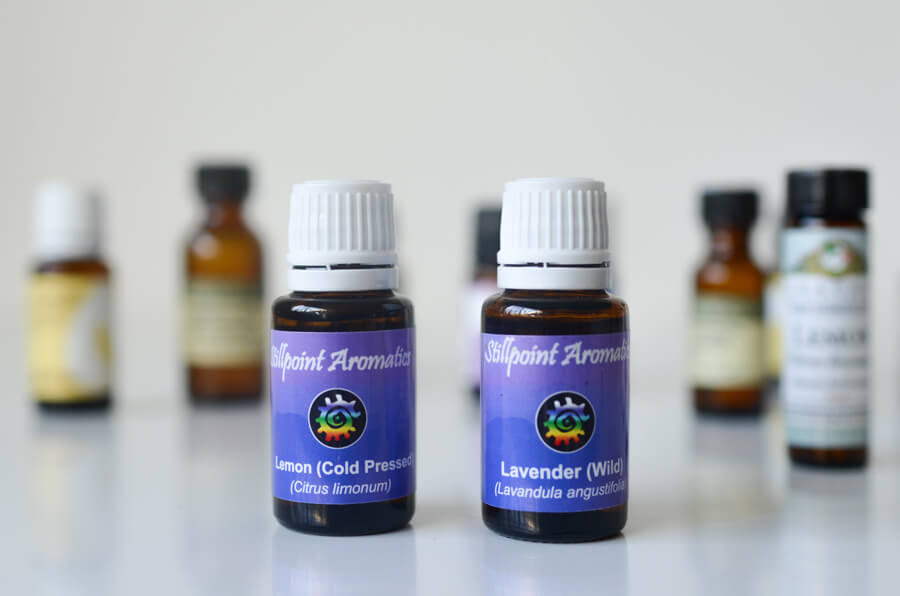
After hours and hours of research, testing and evaluation, with heads full of lavender and lemon, we found it quite easy to determine that Stillpoint Aromatics is our top pick for the best essential oils.
Based in Sedona, Arizona, Stillpoint Aromatics was the passionate creation of Joy Musacchio and Cynthia Brownley, two highly educated women who have been working with essential oils since 1990. In seeking the world’s best sources these very resourceful women have cultivated first-name-basis, personal relationships with farmers and distillers around the planet.
In 2010 they started Stillpoint to offer over 200 of “the purest therapeutic quality essential oils that we have ever experienced.” Additionally, they offer true Aromatherapy Certification programs that are accredited with both the National Association of Holistic Aromatherapy (NAHA) and the Alliance of International Aromatherapists (AIA).
Here’s what makes their essential oils so great:
- Cultivation and distillation: All of their oils are either Certified Organic, Wild Harvested, or Unsprayed (organically grown without certification)
- Testing and purity: Every single batch of every single oil they sell is GC/MS tested by an independent laboratory in France. Then the chemical family of the oils is printed directly on the bottle’s label to assist experienced Aromatherapists.
- Storage: Once they receive their shipments directly from the distiller (no middlemen) they immediately pour them into amber-colored bottles, then they remove the oxygen by filling the remaining space in the bottles with nitrogen before placing them in cold storage; this drastically reduces oxidation and greatly enhances the shelf-life and vibrancy of the oils. And if that weren’t special enough, Joy and Cynthia literally hand-pour every bottle to order. What this means is, the essential oil stays in cold storage, with nitrogen, until you place your order, only then will the oil be poured custom into the tiny 15mL amber bottle, just for you! No one else takes such pride and care.
- Labeling and information: Each hand-poured bottle displays:
-the Latin name
-the source country
-the quality of farming (organic, etc.)
-the part of the plant this oil came from
-how it was extracted
-the chemical family of this oil
-the batch number, so you can see the GC/MS test for that specific oil - Price: Yes, these oils are pricy. At $23.00 for a tiny 5mL bottle of wild lavender, it’s the second most expensive oil, with Oshadhi coming in first at $36.30 for 10mL. But the price is well worth it for the enormous quality you are getting with these oils.
- Love: Every order shipped comes with a custom, handwritten note from Joy and Cynthia thanking you for choosing them.
In our scent tests the Stillpoint’s oils started off smelling mild and fresh, but then after a minute or two they magically blossomed and became very rich, deep, vibrant, stronger and more clear; almost like a fine wine opens up after being uncorked for some time. And for those who may be sensitive to subtle energies, these oils possessed a very clean and high vibration, which is an enormous benefit when using the oils for spiritual practice. No other oils we tested performed this way.
Our testers rated Stillpoint tops in all tests. With their impeccable standards for quality and preservation, there is no question that Stillpoint Aromatics has the best essential oils.
Runner-up: Floracopeia

Floracopeia is another small, independently-owned company with very ethical roots. Started in 2004 in Grass Valley, CA by David and Sara Crow, Floracopeia is our second-best essential oil company. Like Stillpoint, they have strong personal relationships with their distillers; they will even get their hands dirty as they help harvest the plants for extraction when they visit.
Floracopeia’s goal is not only to offer great essential oils but also to help create sustainable ecological, environmental and economic situations that support the small, rural farmers and distillers, as well as the planet. Their Eco-Projects, like the wild agarwood trees in Thailand, reduce illegal harvesting and help create a sustainable forestry system while supporting the livelihoods of the local villagers. And just like Stillpoint, David and Sara offer training and certifications in Aromatherapy.
All of their essential oils are either organic or wild harvested, and while they do not do their own testing, they rely on trusted and vetted relationships with their distillers who provide them with GC/MS tests.
The labels on the Floracopeia bottles offer all the important information you need from a trustworthy brand, including Latin names, organic quality, country of origin and batch number. Not as information-rich as Stillpoint’s bottles, but they still give you all the significant facts for quality oil.
Floracopeia’s very delicate and pure scent comes at almost half the cost of Stillpoint Aromatics’ oils. Priced at $25.00 for a 15mL bottle of organic lavender, that’s about $1.67 per mL, compared to Stillpoint’s $3.17 per mL for wild lavender.
Although Floracopeia doesn’t provide the extensive storage and preservation practices like Stillpoint, their pure and authentic essential oils, with ethical and sustainable practices, as well as a good price, make them an easy pick for our runner up.
Other essential oils we considered
From Nature With Love
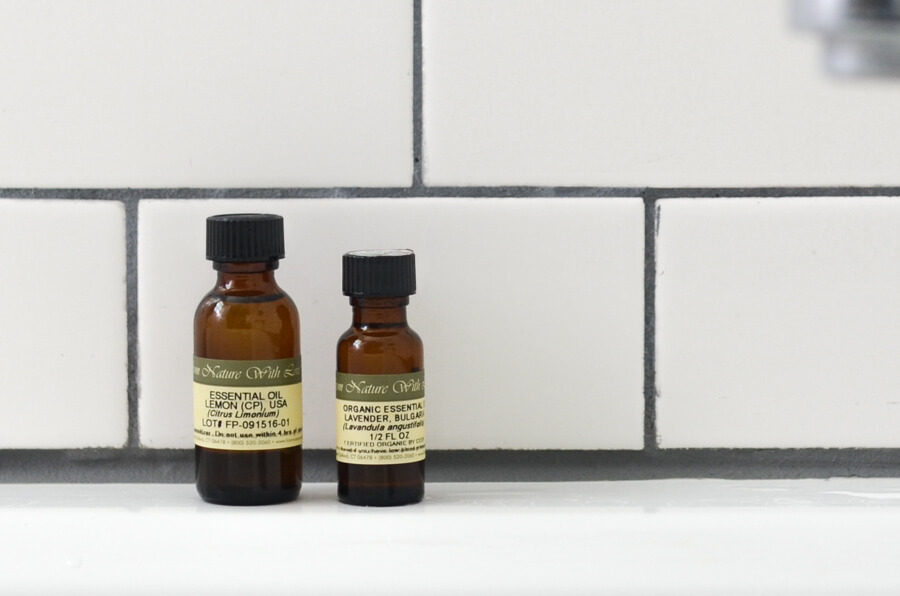
Our third choice was a company called From Nature With Love in Oxford, CT. In our scent tests they actually scored in second place overall however there were a few other issues that dropped them below Floracopeia.
First, their bottles didn’t come with the little plastic dripper caps that cover the mouth of the bottle (aka. orifice reducer), they just had a simple screw cap. Without the orifice reducers, you either have to pour the oil out and make a mess or dip an eye dropper into the oil which can potentially contaminate the product if you’re not careful. Plus if oil gets into the little rubber bulb of the eyedropper it can get stuck in there and go bad, further contaminating the oil.
Second, From Nature With Love is a wholesaler which means they offer products like cosmetics bases and other ingredients for making your own lotions, creams, soaps and more. So their primary focus is not top quality essential oils, but instead, being a one-stop shop for natural body care cosmetics makers.
Third, even though they are a member of NAHA, only some of their essential oils are organic — the lemon was not — and they do not perform GC/MS testing. However, they do fill the amber bottles with nitrogen just like Stillpoint, but that’s the extent of their preservation.
From Nature With Love has some very nice oils, and if you’re planning on making your own lotions they’re a good buy. But for everyday uses, we’d recommend sticking with Stillpoint Aromatics or Floracopeia.
Mountain Rose Herbs
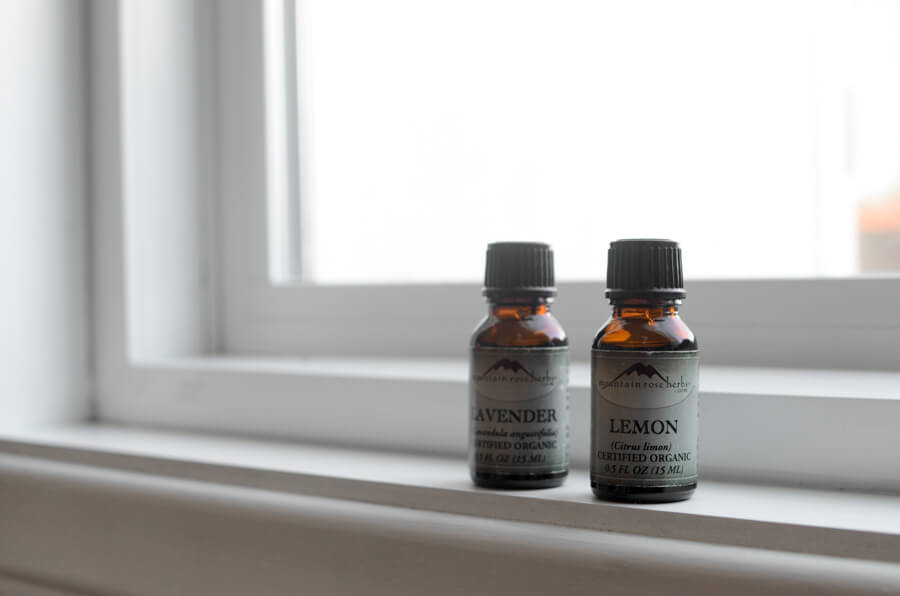
Based in Eugene, OR, Mountain Rose Herbs offers USDA Organic essential oils, in addition to a variety of other products like teas, spices, bath and body items, and kitchen tools. They are a very eco-conscious and sustainable company, but in the scent tests we tried, they seemed to lack the aromatic quality of the top choices.
The prices were about average at $12.75 for 15mL of lavender, but with so many alternate products they offer, their full attention to quality in the essential oils becomes spread a little thin.
Plant Therapy

Plant Therapy essential oils is a family owned company in Twin Falls, ID, and they’ve teamed up with world-renowned Aromatherapy expert, Robert Tisserand to help them ensure their oil’s quality and purity. They offer both USDA Organic and conventionally farmed essential oils in all the popular scents, and they test each batch with GC/MS.
With all those glowing statistics it came as a surprise that our testers gave very mixed reviews with these oils. Some thought they were strong and clear, while others noticed strange undertones and even artificial, candy-like qualities. Because of this, they ranked number five overall in our smell test.
Plant Therapy’s labels are a bit scarce in their information. They display the proper Latin names and the USDA Organic logo, but that’s it. Instead of including the country of origin and other important notes — which can be found on the website — they have a long description of what the oils could be used for and how to use it, followed by an FDA disclaimer so they won’t get in trouble.
Oshadhi
Oshadhi is a German company imported to America and it was the most expensive oil at $36.30 for 10mL of lavender; that’s more than Stillpoint. But even with that high price these oils got some pretty low ratings with our test group. They noticed sourness in the lavender, hints of chemical flavor in the lemon and weakness in all the scents.
They do sell only organic and wild harvested oils and have been in the essential oil business since 1990. Their labels have everything you need to know, including the chemical family of the oils and very clear batch numbers, but that just wasn’t enough to convince us to like the the way they smelled.
Rocky Mountain Oils
This brand got the worst test scores of all. Rocky Mountain Oils from Orem, UT smelled weak and medicinal; someone even said it smelled like a laundry detergent. This brand doesn’t use certified organic sources for most of their offerings, and our experts speculated that lower quality ingredients or blends gave them such strange aromas.
RMO has started offering some certified organic oils since we first reviewed them, but they still don’t give as much information about their supply chain as our top picks.
This brand tests every batch with GC/MS analysis which you can easily view on their website, but their labels are inconsistent. All of them show the Latin name, but only some offer you the country from which the plants were sourced, but like the other companies, all useful information can be found on the website.
Other companies
The popular multi-level marketing companies, dōTERRA and Young Living didn’t make our top picks for several important reasons: their high retail prices, their lack of organic certification for all of their oils, and their insistence that most of their essential oils are safe to take internally not giving any regard to the potential health hazards of self-prescribing without professional clinical supervision.
We want you to be safe and we don’t want abundant marketing to convince you that you can be your own chemist without the necessary training. For all of these reasons, we have chosen not to include these companies in our testing.
The bottom line
Every one of the oils we tested offered their own unique signatures of aroma, and with this very subjective task we have undertaken, it made finding the best essential oils an extremely difficult project. Our criteria was strict and our noses were ready for the challenge. When it comes to your health we didn’t want to let money be a deterrent for finding you the truly best.
Stillpoint Aromatics, with their vibrant, rich scents, plus their devotion to the utmost of quality in sourcing, storage and preservation made them stand out high above the crowd. You can sense the life and the energy in these oils, and no other brand can compare to that.
Floracopeia has a passionate dedication for the health of the planet and the farmers who work upon it, while providing pure and authentic essential oils. Their freshness and integrity is present in every bottle of oil they offer, and at nearly half the price of our top pick they earn a deserving and proud second place.
Everyone has their own preferences in scents, brands and quality, so your personal opinions on what you like best may differ from ours. With a respectful, neutral perspective and a fresh experience on essential oils we are confident that you will get the most exceptional products from these companies.
More Reviews
Winix 5500-2 Air Purifier Review
Winix - 5500-2
Levoit LV-H132 Air Purifier Review
Levoit - LV-H132
Dyson – TP01 Fan & Air Purifier Review
Dyson - TP01
Shark - Apex
Frigidaire - FFAD7033R1
Winix - 5300-2
The 9 Best Glass Water Bottles
Ello - Syndicate
Thermophore - MaxHEAT


